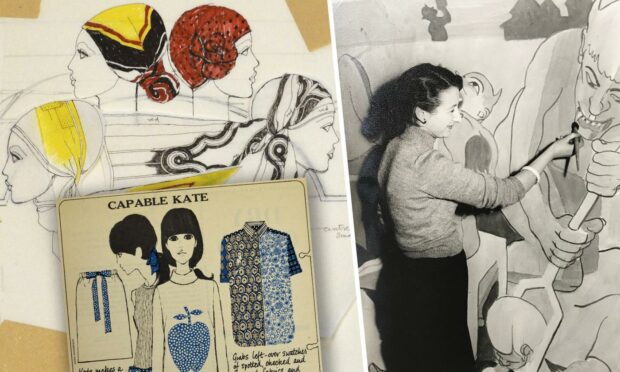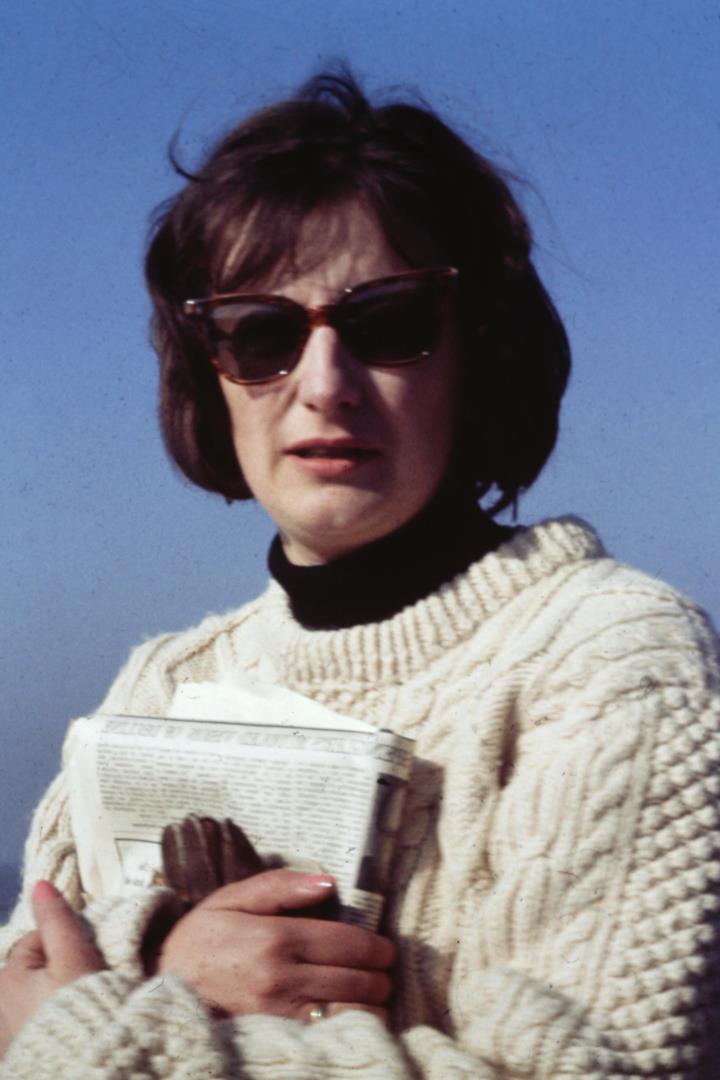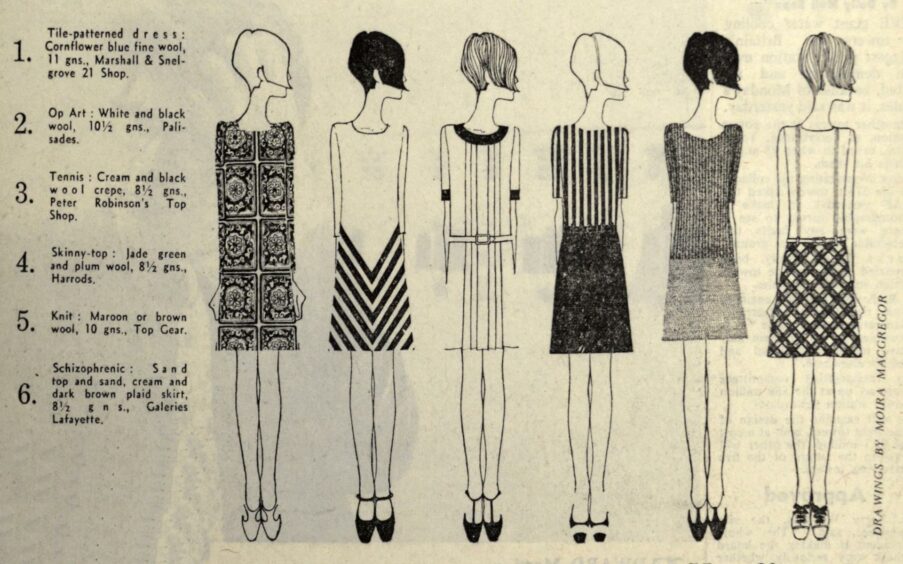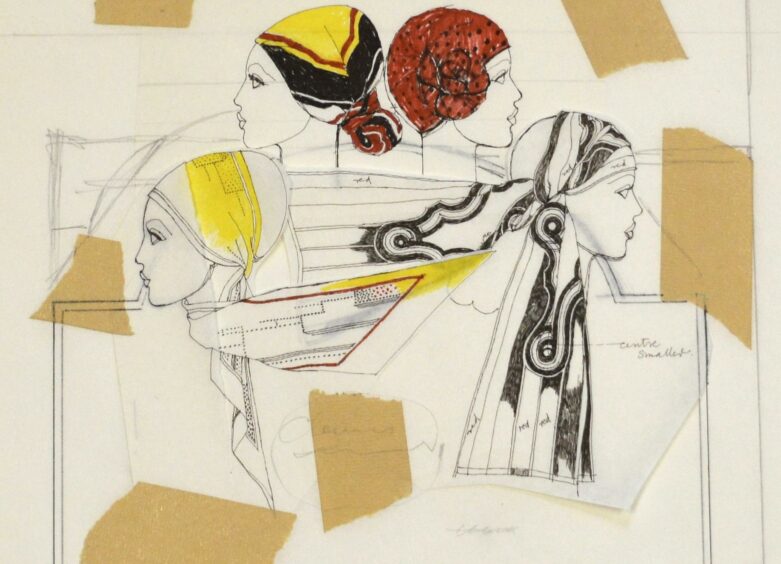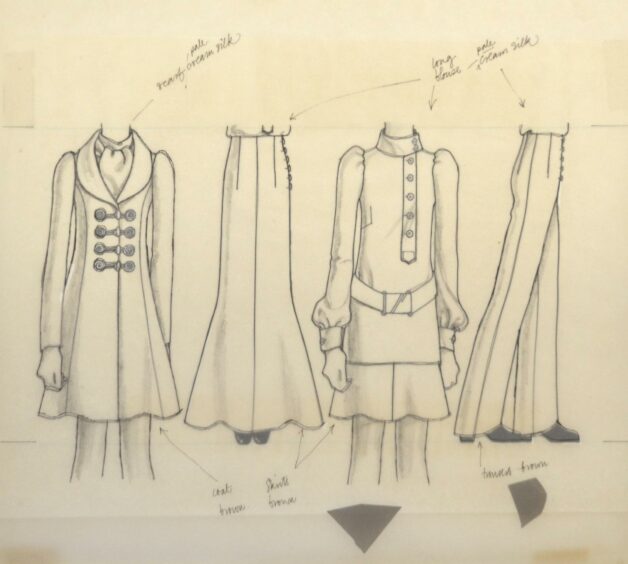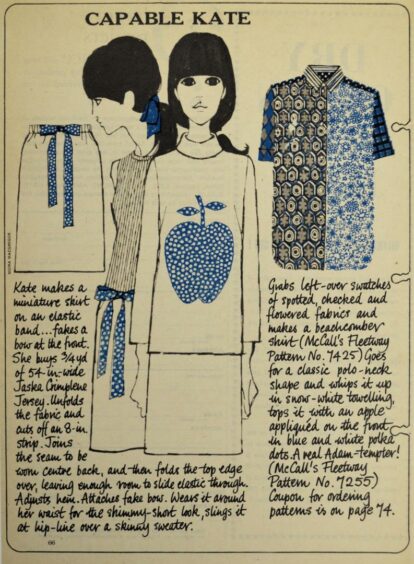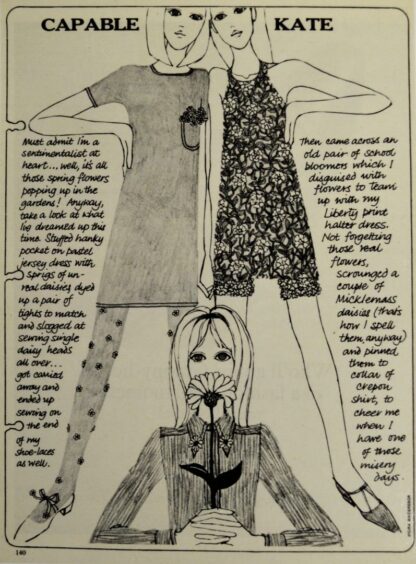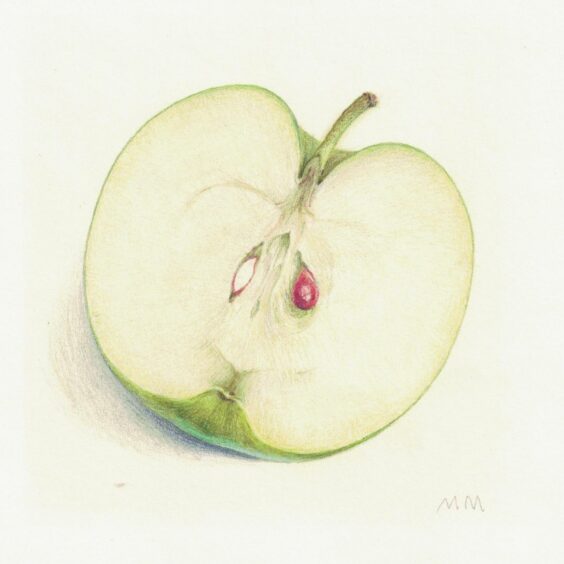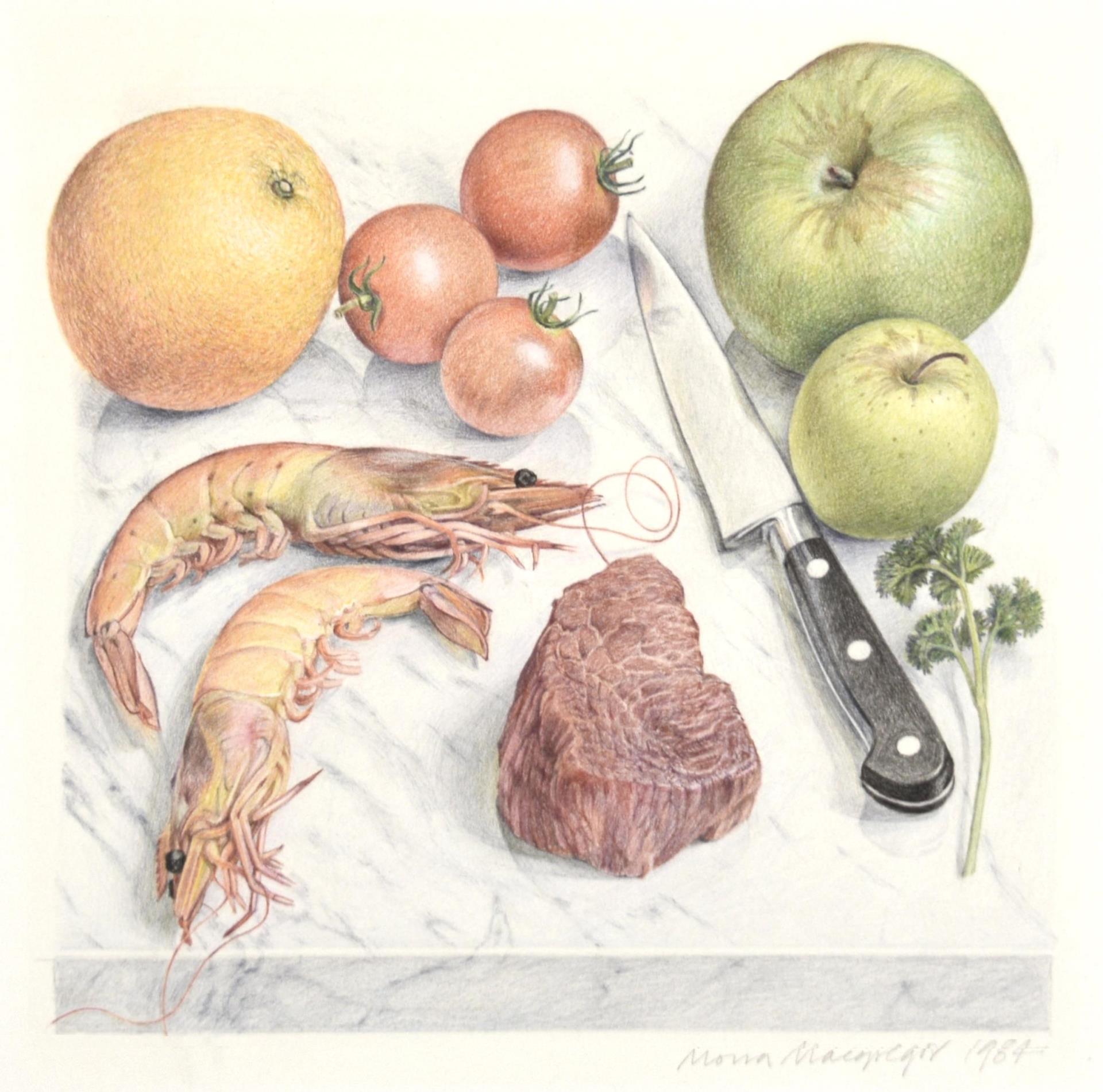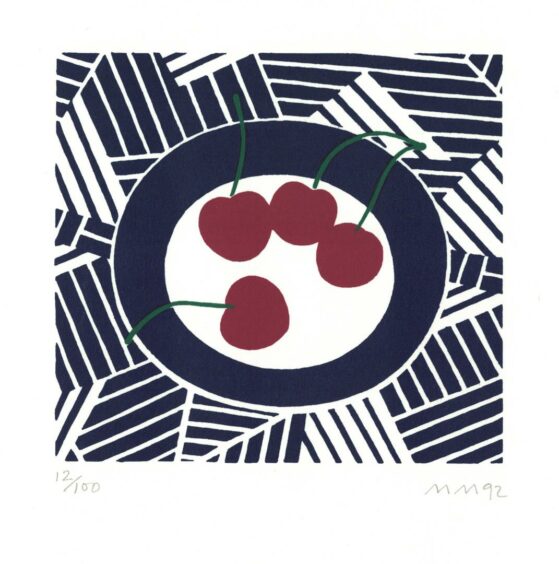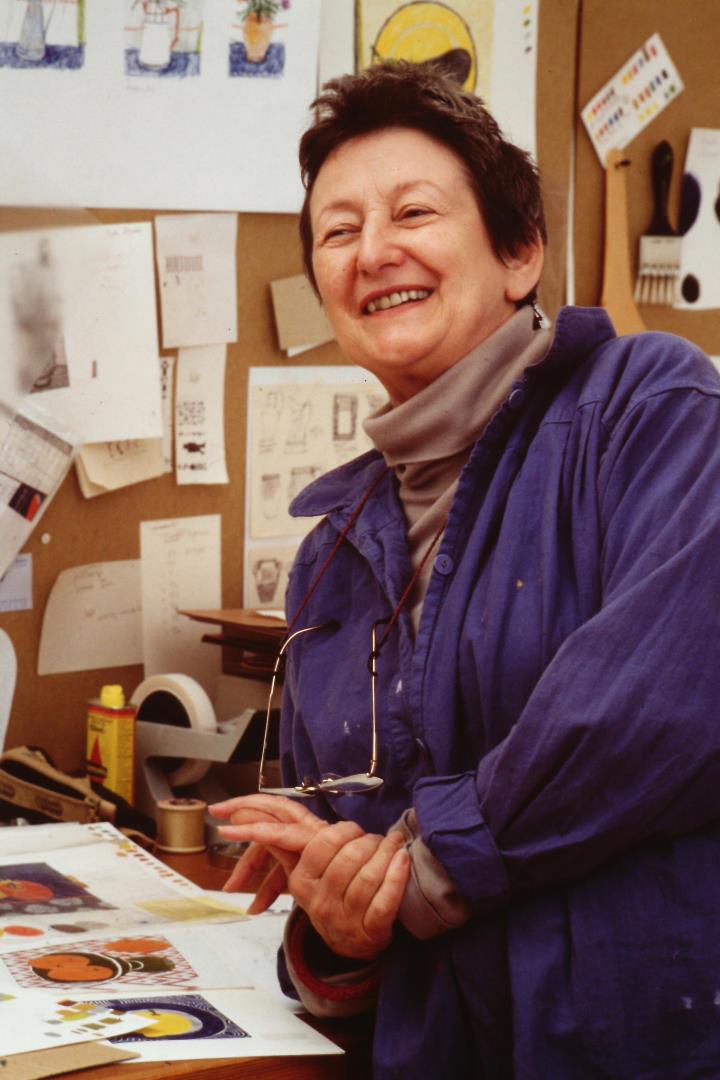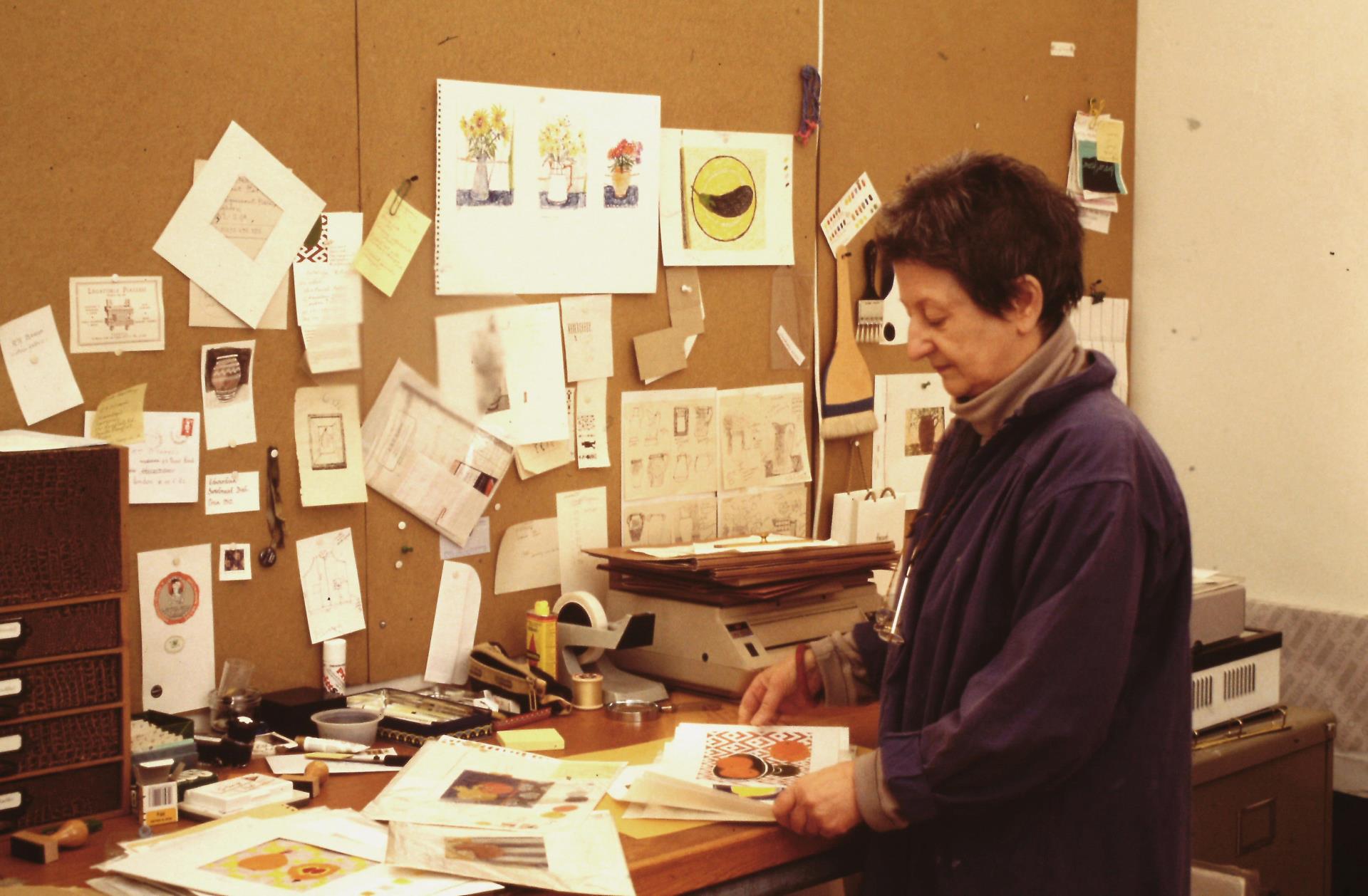She was the Dundee artist who built an international career as a fashion illustrator, editor and painter.
Moira Macgregor was most well-known for her stylish fashion illustrations in the 1960s and 1970s.
She then began to focus on creating realistic still-life of food, before ending her career as an abstract painter and printmaker.
Macgregor’s work is being shown on a new website which has been produced by the BBC in partnership with the University of Dundee’s Museum Collections.
Who was Moira Macgregor?
Moira Macgregor was born in Dundee in 1931.
She lived on Glenprosen Drive and attended Rockwell Primary School, then Harris Academy in the 1940s.
In 1949, Macgregor enrolled at the Dundee College of Art.
At the art college, Macgregor studied drawing and painting under Alberto Morrocco – the Scottish artist who was famous for painting Scottish landscapes and Venice beach scenes.
Macgregor graduated in 1954 and embarked on a travelling scholarship with fellow design student Kathleen Mowat.
The scholarship took them to Rome and Florence, where Macgregor completed a series of drawings and sketches.
After her trip to Italy, Macgregor returned to Dundee and completed some early fashion illustrations for local newspapers.
She then decided to go to teacher training college, and taught art in primary school for two years.
But the desire to create never left her and in the 1950s she moved to London to pursue her art career.
Going Dutch
She was hired by the clothing company C&A in 1958 and moved to Amsterdam to work with them as a fashion artist.
University of Dundee museum curator Matthew Jarron notes that Macgregor landed the job with C&A at a good time for the fashion industry.
He said: “When Macgregor joined the company, the government had relaxed its post-war control over consumer goods.
“Salaries were increasing, and so was the demand for stylish but affordable clothes.”
A new phase of Macgregor’s career began in the early 1960s when she returned to London and was employed by the Helen Jardine Artists Studio in Covent Garden.
She met Polish designer Barbara Hulanicki at the studio, and it was a meeting that would go on to define Macgregor’s career.
In 1963, Hulanicki founded London fashion company Biba.
To begin with, Biba was a mail-order fashion business and its outfits were inexpensive and accessible to the public.
Macgregor was asked to illustrate the designs for Biba’s mail-order catalogues.
With the help of Macgregor’s designs, Biba became known as the place to shop in London.
It was in her time working at Biba that Macgregor also met her husband, graphic designer John McConnell.
McConnell designed the famous Biba logo.
In 1965, Macgregor created the feature “Capable Kate” for Honey, the teenage fashion magazine.
Mr Jarron adds: “Kate was confident, thrifty and occasionally slightly outrageous.
“She was the ideal stylish friend who told her readers how she combined and altered her old clothes or sewed new ones from scratch, to match the latest trends.
“Macgregor was keen to promote sustainable fashion, and her use of recycling and upcycling now seems ahead of its time.”
In the 1960s and the 1970s Macgregor continued to work in magazines as an illustrator, editor, and design correspondent.
This included working with Nova magazine in London, and Glamour magazine in New York.
But she soon decided to venture into new styles.
Macgregor departed from fashion in the 1980s and 1990s.
She became particularly well-known for her realistic illustrations of fruit.
Mr Jarron noted that Macgregor’s fruit illustrations were the result of a rigorous and lengthy study process.
He added: “Sometimes she would add the sticky labels from the individual pieces of fruit next to her sketch, to remind herself of the exact variety.”
Macgregor was proud of her Scottish heritage.
All of her watercolours, prints and oil paintings were signed as Moira Macgregor with her distinctive MM logo.
She continued to paint fruit until the end of her career, experimenting with several different styles and gradually simplifying her compositions.
A note in the back of one of her sketchbooks reads: “Paint the essence, avoiding the tyranny of description.”
This culminated in a set of abstract screen prints in 1992, which depicted different shapes made up of strong blocks of colour.
In the 2000s she departed from this use of colour, and produced a series of paintings which focused on a single object.
These were exhibited in a solo exhibition in 2011.
Macgregor’s work is currently being shown on a new website from the BBC which has been created in partnership with the University of Dundee’s museum collections.
Her work was donated to the university when she died in 2016.
The university museums received a collection of more than 500 drawings, paintings, prints and proofs from Macgregor’s family, who had donated the work in accordance with her wishes.
Mr Jarron added: “All the artworks [on the site] are drawn from this remarkable collection, which spans Moira’s entire career and shows the full breadth of her artistic skill as an illustrator, painter and printmaker.
“This exceptional collection reveals Macgregor’s creative process and demonstrates the amazing range and ability of an extraordinary talent.”
- Macgregor’s work can be seen on the website: Moira Macgregor: Dundee’s Fashion Pioneer.
More like this:
Former art students return to Dundee University 50 years on for reunion showcase
The Dundee Colourist: Search for lost paintings by John Maclauchlan Milne
